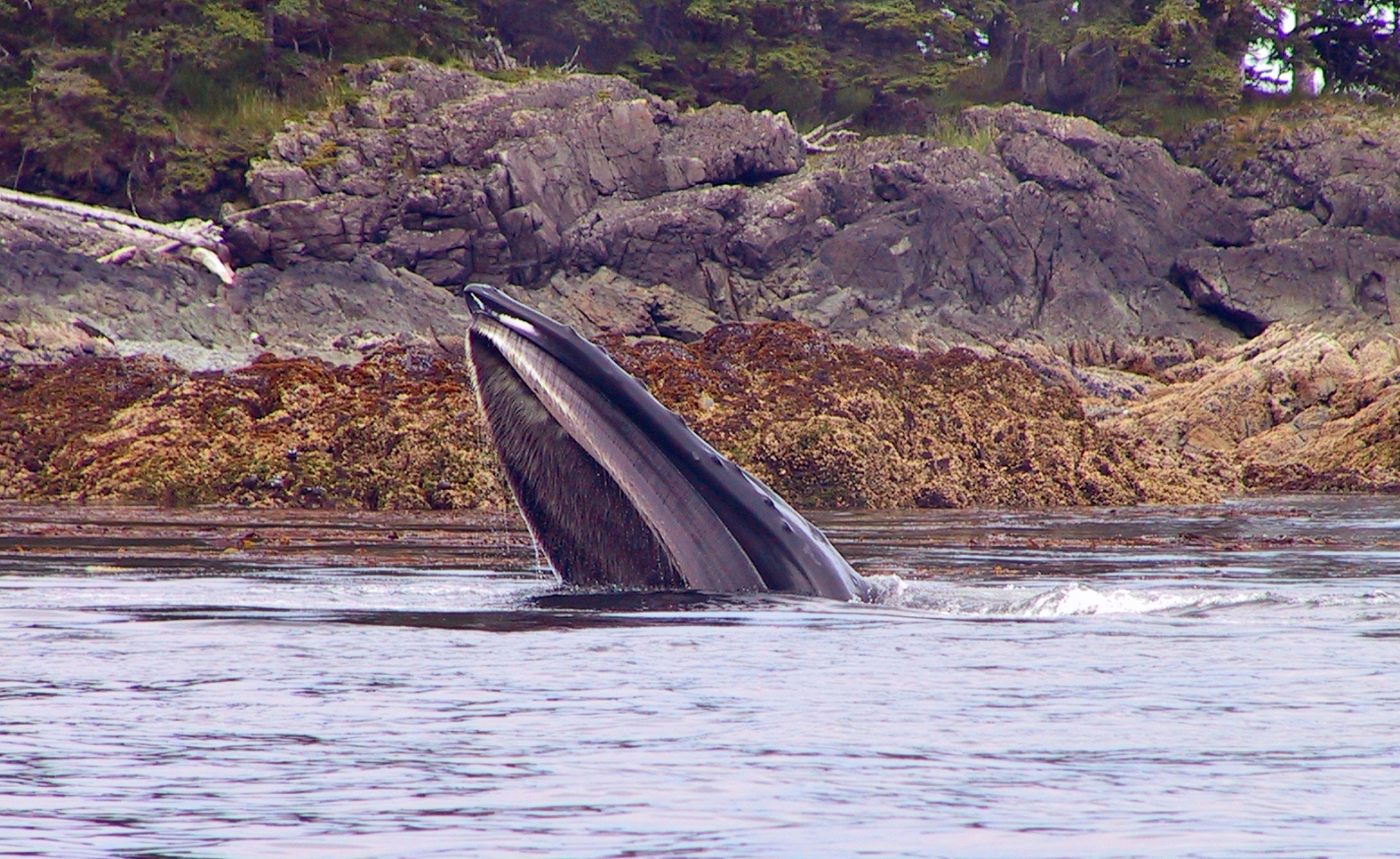|
Cetacean Surfacing Behavior
Cetacean surfacing behaviour is a grouping of movement types that cetaceans make at the water's surface in addition to breathing. Cetaceans have developed and use surface behaviours for many functions such as display, feeding and communication. All regularly observed members of the order Cetacea, including whales, dolphins and porpoises, show a range of surfacing behaviours. Cetacea is usually split into two suborders, Odontoceti and Mysticeti, based on the presence of teeth or baleen plates in adults respectively. However, when considering behaviour, Cetacea can be split into whales (cetaceans more than 10 m long such as sperm and most baleen whales) and dolphins and porpoises (all Odontocetes less than 10 m long including orca tp://ftp.fao.org/docrep/fao/009/t0725e/t0725e10.pdf FAO Marine Mammals of the World, Suborder Odontoceti.) as many behaviours are correlated with size. Although some behaviours such as spyhopping, logging and lobtailing occur in both groups, others such as ... [...More Info...] [...Related Items...] OR: [Wikipedia] [Google] [Baidu] |
Southern Right Whale
The southern right whale (''Eubalaena australis'') is a baleen whale, one of three species classified as right whales belonging to the genus ''Eubalaena''. Southern right whales inhabit oceans south of the Equator, between the latitudes of 20° and 60° south. In 2009 the global population was estimated to be approximately 13,600. Taxonomy Right whales were first classified in the genus ''Balaena'' in 1758 by Carl Linnaeus, who at the time considered all right whales (including the bowhead) to be a single species. In the 19th and 20th centuries the family Balaenidae was the subject of great taxonometric debate. Authorities have repeatedly recategorised the three populations of right whale plus the bowhead whale, as one, two, three or four species, either in a single genus or in two separate genera. In the early whaling days, they were all thought to be a single species, ''Balaena mysticetus''. The southern right whale was initially described as ''Balaena australis'' by Des ... [...More Info...] [...Related Items...] OR: [Wikipedia] [Google] [Baidu] |
Sowerby's Beaked Whale
Sowerby's beaked whale (''Mesoplodon bidens''), also known as the North Atlantic or North Sea beaked whale, is a species of toothed whale. It was the first mesoplodont whale to be described. James Sowerby, an English naturalist and artist, first described the species in 1804 from a skull obtained from a male that had stranded in the Moray Firth, Scotland, in 1800. He named it ''bidens'', which derives from the two teeth present in the jaw, now known to be a very common feature among the genus. Physical description File:Mesoplodon bidens.jpg, Profile of an adult female File:Mesoplodon bidens British mammals (Pl. 46) (21866206616).jpg, Adult male File:Head of male Mesoplodon bidens.jpg, Adult male head, showing teeth. Sowerby's beaked whale has a typical body shape for the genus, and is mainly distinguished by the male's dual teeth positioned far back in the mouth. The whale's beak is moderately long, and the melon is slightly convex. The colouration pattern is a grey with light ... [...More Info...] [...Related Items...] OR: [Wikipedia] [Google] [Baidu] |
Baleen Whale
Baleen whales (systematic name Mysticeti), also known as whalebone whales, are a parvorder of carnivorous marine mammals of the infraorder Cetacea (whales, dolphins and porpoises) which use keratinaceous baleen plates (or "whalebone") in their mouths to sieve planktonic creatures from the water. Mysticeti comprises the families Balaenidae (right and bowhead whales), Balaenopteridae (rorquals and the gray whale), and Cetotheriidae (the pygmy right whale). There are currently 16 species of baleen whales. While cetaceans were historically thought to have descended from mesonychids, molecular evidence instead supports them as a clade of even-toed ungulates (Artiodactyla). Baleen whales split from toothed whales (Odontoceti) around 34 million years ago. Baleen whales range in size from the and pygmy right whale to the and blue whale, the largest known animal to have ever existed. They are sexually dimorphic. Baleen whales can have streamlined or large bodies, depending on th ... [...More Info...] [...Related Items...] OR: [Wikipedia] [Google] [Baidu] |
Rorqual
Rorquals () are the largest group of baleen whales, which comprise the family Balaenopteridae, containing ten extant species in three genera. They include the largest animal that has ever lived, the blue whale, which can reach , and the fin whale, which reaches ; even the smallest of the group, the northern minke whale, reaches . Rorquals take their name from French , which derives from the Norwegian word : the first element originated from the Old Norse name for this type of whale, , probably related to the Norse word for "red", and the second from the Norse word ''hvalr'' meaning "whale" in general. The family name Balaenopteridae is from the type genus, ''Balaenoptera''. Characteristics All members of the family have a series of longitudinal folds of skin running from below the mouth back to the navel (except the sei whale and common minke whale, which have shorter grooves). These furrows allow the mouth to expand immensely when feeding, "permitting them to engorge gre ... [...More Info...] [...Related Items...] OR: [Wikipedia] [Google] [Baidu] |
Hal Whitehead
Hal Whitehead is a biologist specializing in the study of the sperm whale (''Physeter macrocephalus''). Whitehead is professor at Dalhousie University. The primary field research vessel of his laboratory is the ''Balaena'', a Valiant 40 ocean-going cruising boat, which normally does its work off the coast of Nova Scotia. Other marine mammals studied by Whitehead's laboratory include beluga whales, pilot whales, northern bottlenose whales, and bottlenose dolphins. Research findings Whitehead's research is focused primarily upon the behavior, population biology, and ecology of the sperm whale. Topics include social structure, cultural transmission of behavior, as well as acoustic communicative behavior such as click trains. Selected publications * Whitehead, H. (2003). ''Sperm Whales: Social Evolution in the Ocean.'' 456 p., 60 halftones, 84 line drawings, 41 tables. 6 x 9. Chicago: University of Chicago Press. * Whitehead, H. and Luke Rendell. (2014). The Cultural Lives of Whale ... [...More Info...] [...Related Items...] OR: [Wikipedia] [Google] [Baidu] |



